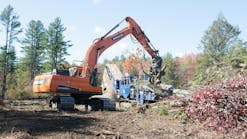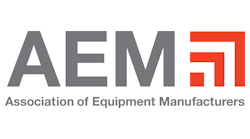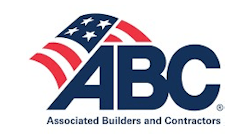Caterpillar Computer-Aided Earthmoving System Simplifies Mining, Excavating, Compacting
Sept. 1, 2001
The Computer Aided Earthmoving System (CAES) integrates operations, planning, and design, and it offers a means for engineers and managers to show equipment operators exactly what they are doing in relation to the plan. The result is better use of equipment resources, higher production, and lower cost. CAES puts a color computer site plan of the project in front of each equipment operator whose machine is equipped with the system. The real-time display is color coded, showing how much material must be cut or filled and the location of the machine in relation to the site plan. Operators can view up-to-the-minute plans onboard their machines, and they can view current topography and cross-sections, which CAES updates in real time as the surface is altered. CAES eliminates the need for placing the hundreds of survey flags that define elevation, grade, slope, and material type. The system also eliminates problems with low visibility caused by darkness or inclement weather, because operators are not dependent on sighting flags or other landmarks. The CAES system is designed to work with many different types of equipment, both Cat and competitive, and in several different applications. Currently systems are available for front shovels (both hydraulic and cable), wheel loaders, track-type tractors, scrapers, motor graders, and compactors. The display for each type of machine is slightly different, but only the onboard software differs between machines. The system can direct operators in defining bench elevations in grade and slope in earthmoving projects, as well as compaction and coverage in earthworks and landfill applications.What’s Behind CAES
CAES uses onboard computers, software, GPS, and data radios and receivers to replace conventional surveying. The system accepts plans generated with conventional computer-aided-design software. Caterpillar’s Mining and Earthmoving Technology Systems (METS) software, called METSmanager, provides a seamless interface for translating plans into CAES format. Using a high-speed radio system developed jointly by Trimble and Caterpillar, METSmanager transmits the information to the appropriate CAES-equipped machine. The information is in the form of a two-dimensional digital terrain model. As the machine works, terrain updates, using GPS technology, are collected and transmitted back to the office where METSmanager feeds the data to another program, CAESoffice. CAESoffice can show several machines working at the same time–on a display similar to those seen in the machines. The software also combines terrain updates from all machines working in the field to maintain a single, up-to-date model of the site. Such data can be exported to the original planning software when additional design work or plan changes are needed. CAESoffice also provides immediate, accurate production calculations. No error-prone, in-field estimates are required. Instead, supervisors can make operating decisions based on accurate, up-to-the-minute information. CAES offers a cost-effective, information-based means to improve operating efficiencies by delivering the right material to the right place at the right time. Several commercial systems are now operating in North America, and each has quickly proven to be cost effective.At present, CAES is jointly marketed by Caterpillar and Trimble, who provide end-user and original-equipment-manufacturer solutions for diverse applications including surveying, mapping/geographical information systems, agriculture, mining, military, commercial aviation, automotive, vehicle tracking, and timing.








